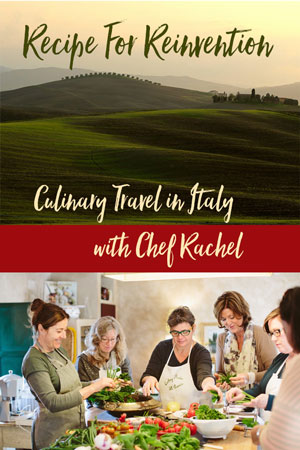Dear Kitchenista,
Why does food stick to my expensive stainless steel and enameled cast iron pans?

From the little picture I posted last week of an iphone sending that text about the stainless pans, I got a bunch of emails asking, “so why does everything seem to stick to these pans?” So, to do my part in ending this global PAN demic, (get it? Pan Demic). I feel I must go ahead and answer that question without further delay.

For a while, when I first got out of culinary school, I did all these demos for a very high-end cookware company, going out to specialty and department stores in the NY Metro Area to cook and talk about these heavy, professional quality pots and pans. One of the most common complaints I heard most about these pans, was that everything seems to stick to them and once crusted upon, they are hard to get clean. The second most popular complaint was that they were too heavy to use so they most often just use their lighter, cheaper, lower quality or non-stick cookware to get the job done. Sad, but true.
If used properly, you can enjoy your heavy stainless steel pans, or heavy enameled cast iron for the excellent, time-honored cooking instruments that they are. They conduct heat better, distribute it more evenly, and hold on to it better while cooking, all of which make controlling the temperature and your results a lot easier. They can be used stovetop and in the oven and on induction burners, too. Stainless steel and enameled cast iron don’t leech chemicals into your food, don’t scratch peel or warp, (unless you have a habit of immersing hot-as-hell pans in ice cold water…and if you are…STOP THAT!), are durable and will last forever unless you toss them from the roof of your house (stop doing that too!) I still have the All-Clad stainless and Le Creuset enameled cast iron pans that I got as wedding gifts 20 years ago and they are all that I use. These indestructible pans are wonderful tools that will last a lifetime, so they are worth learning how to use properly.

A preheated pan and lower flames are the key to stick-free stainless steel and cast iron cooking. That’s really the whole secret. Here’s the short version:
1. Preheat the pan.
2. Don’t crank up the heat too high. Medium/low is good for eggs/butter. Medium high good for sautéing and searing. (Veggies and proteins)
3. Preheat the oil/fat you’ll be using.
4. Then, and only then, add whatever it is you are cooking.
Here is the long version, for cooking eggs, egg batters, pancakes, fritters, crepes, etc:
1. Heat the pan (dry) over medium/low heat for about 2 minutes. Let it get fully warmed through. Really. Let it sit there over the flame and stop worrying. If you feel the heat radiating off the pan when you place your palm a few inches above the center of it, then it’s warm enough. If you feel as thought it’s gotten too hot, take it off the heat and let it cool a bit and then start over with a lower flame.
2. Add the fat to the pan that you are using, (butter, olive oil, veg oil, bacon fat, etc.). Allow the fat to warm fully. Butter will be totally melted and bubbling, but not burning. Oil will begin to shimmer and thin out. If you are using butter, consider adding a touch of veg or olive oil to it to increase the smoke/burning point. Make sure to use enough fat to fully coat the bottom of the pan and up the sides at least an inch. You want a bit more than just a coating…enough fat for the eggs to “float” on the oil. The oil, when hot, will create a natural barrier between the food and the pan. If the oil/fat is not hot enough, the eggs will “sink” and stick to the pan.
3. Adding eggs: gently pour beaten eggs onto warmed fat (or break whole eggs gently on to the fat for fried eggs) and resist moving them until they harden a bit, 5-6 seconds, and the “barrier” is established. At this point you can turn off the flame/heat under your pan and the residual heat in the pan will finish cooking your eggs without over cooking them, and you can move the eggs in the pan to create “curds” or scrambled eggs, or if doing an omelette, then proceed adding filling, folding over, etc. If cooking fried eggs, wait until the white is set and releases from the pan on it’s own when you shake it, or gently move it with a spatula to flip. You can also cover the pan and let fried eggs sit and steam for a minute of two instead of flipping, to cook the yolk top.

For sautéing veggies, or searing meats:
1. Follow directions above for preheating pan and adding oil/fat. Over a medium heat, (remember the key is to bring the pan up to temperature gradually, and it will hold the heat, rather than crank up the heat all at once and get the pan too hot), add your food, making sure that there is an even sizzling sound when your food touches the pan. This lets you know that your food is cooking on contact and creating that natural barrier to prevent sticking. Again, resist the urge to move the food or turn it too soon or you will miss the holy grail of pan cooking: caramelization! The natural sugars in your food brown on the cooked surface, developing great flavors and when that happens food should lift off of the cooking surface easily. If the sound your food makes on initial contact with the pan is more of a screaming crackle than a sizzle, your heat is probably too high and sticking may occur.
If you messed up a bit and end up with a dirty pan, or did everything right and still ended up with a bit of crust in your pan, here is my sure-fire advice for getting them clean quickly, but you have to have the will power to delay gratification (eating) and to what I say:
Wash the pan immediately! While it’s hot!
Most manufacturers suggest you allow the pan to cool down before washing, but the people who write these guidelines obviously have help, or have never washed a pan in their lives. I would follow their advice about never plunging a hot pan into cold water, so you don’t warp your pans or create a cloud of steam that will frizz your blow-dry and ruin your evening, but otherwise, trust me. You want to wash it while it’s warm. It will only take a minute if you do it this way, and you’ll enjoy your meal better knowing the pan is done and not forming an immutable layer of residue that will require muscle and profanities to remove.
So, holding the pan with an oven mitt or dry towel, bring it over to the sink and run the hottest possible water you can. Squirt a small amount of dishwashing liquid onto the pan. Using a nylon pad or other gently abrasive sponge (I do use steel wool on my stainless, but not on my enameled cast iron), start to gently scrub off the crusted food layer. I hold the pad with tongs to accomplish this with a really hot pan, to save my hands and nails, something I’ve seen restaurant dishwashers do. You’ll find the crusted food releases fairly easily. If you have stubborn spots, you can do one of the following:
1. Fill the pot/pan with hot water and a little soap and return it to the stove over a low flame. Go eat. When you are done eating, the warmed water in the pan and the soap with have “deglazed” pan sufficiently to allow you to finish scrubbing it clean.
2. Use a slightly abrasive cleaner like “Bartender’s Friend” or Soft Scrub to help finish the job.



















